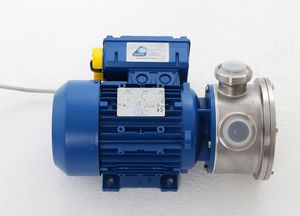
Calf milk heater R0221-stationdigital
Add to favorites
Compare this product
Characteristics
- Animal type
- calf
- Number of stations
- 1-station
- Other characteristic
- digital
- Maximum temperature
20 °C, 40 °C, 70 °C, 100 °C
(68 °F, 104 °F, 158 °F, 212 °F)
Description
This equipment facilitates heating of milk to the required temperature for maturing, curdling or skimming.
We have two types of heater:
• A heater for small quantities that can be immersed directly into the milk container.
• A heater for larger quantities using a plate heat-exchanger system. These models process flow rates of 250 L/H, 500 L/H and 1000L/H. Ideal for use in dairies, cheese factories, butter factories and other food industries.
Technical sheet
1. A milk heater for small quantities :
The handle and the immersion element design aid portability. The heater has 12 selectable heating levels from 20°C to more than 100°C.
An indicator light illuminates when in operation.
Electrical power: 230 V, 50Hz, 2300W.
2. Heater for large quantities:
This heater is made of stainless steel and mounted on an optional stainless steel AISI-304 platform.
The heat exchanger uses hot water to transfer the heat to the milk: the incoming milk, at 4°C, heats up to between 20°C and 40°C.
A temperature probe and safety system ensures the heater functions correctly. The flow of milk is generated by a circulation pump.
The feet are adjustable.
The capacity and power vary depending on the model.
Catalogs
No catalogs are available for this product.
See all of AVEDEMIL‘s catalogsRelated Searches
*Prices are pre-tax. They exclude delivery charges and customs duties and do not include additional charges for installation or activation options. Prices are indicative only and may vary by country, with changes to the cost of raw materials and exchange rates.











